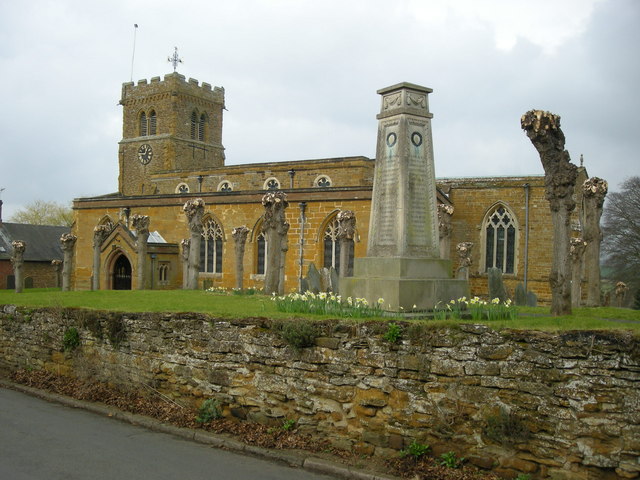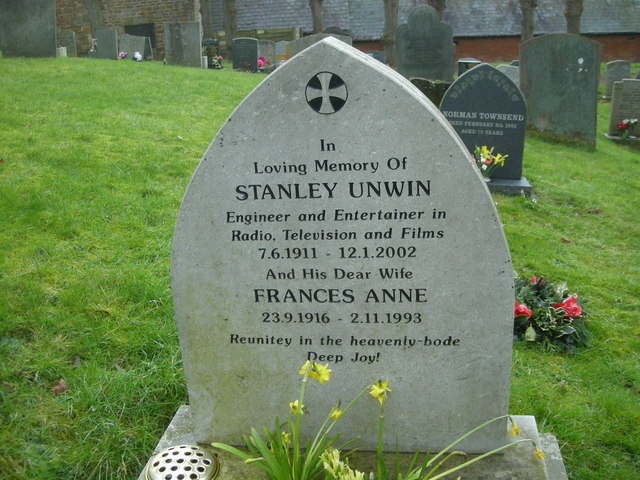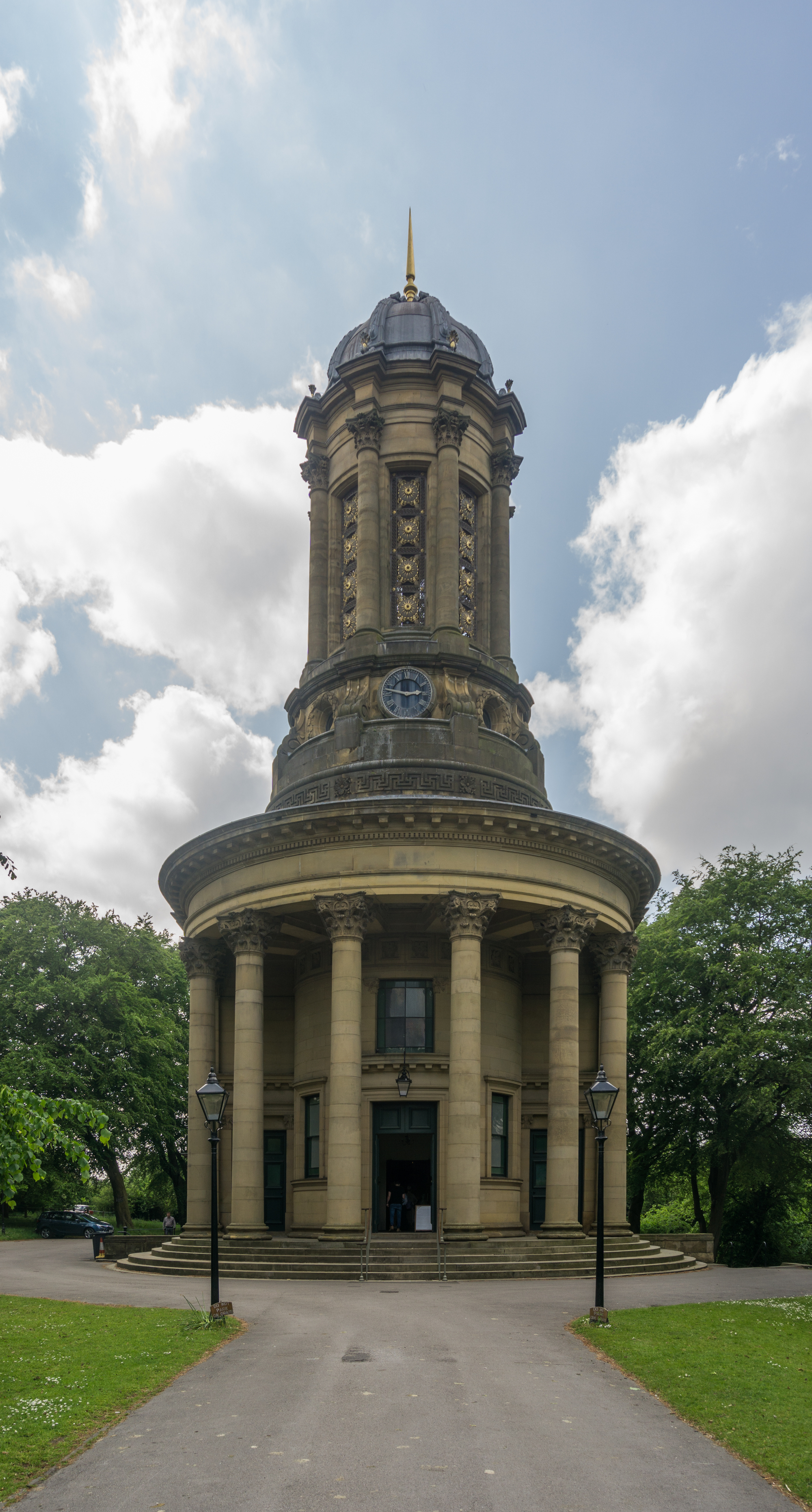|
Long Buckby
Long Buckby is a large village and civil parish in West Northamptonshire, England. In 2020 the parish of Long Buckby, which includes the hamlet of Long Buckby Wharf, was estimated to have a population of 4,303. Long Buckby is hill top village, located around north-east of the town of Daventry, and roughly midway between Northampton and Rugby, with each being around to the south-east and north-west respectively. The west of the parish has the A5 road, Grand Union Canal, West Coast Main Line railway and M1 motorway all passing through the Watford Gap, with Watford, Northamptonshire being the next village to the north. Just south of the village is Long Buckby railway station on the Northampton Loop corollary of the West Coast Main Line. History The villages name origin is uncertain. 'Bukki's farm/settlement' or 'Bucca's farm/settlement'. Alternatively, 'he-goat farm/settlement'. Long Buckby has a history going back approximately 1,000 years to the Vikings when all of northe ... [...More Info...] [...Related Items...] OR: [Wikipedia] [Google] [Baidu] |
West Northamptonshire
West Northamptonshire is a unitary authority area covering part of the ceremonial county of Northamptonshire, England, created in 2021. By far the largest settlement in West Northamptonshire is the county town of Northampton. Its other significant towns are Daventry, Brackley and Towcester; the rest of the area is predominantly agricultural villages though it has many lakes and small woodlands and is passed through by the West Coast Main Line and the M1 and M40 motorways, thus hosting a relatively high number of hospitality attractions as well as distribution centres as these are key English transport routes. Close to these is the leisure-use Grand Union Canal. The district has remains of a Roman town Bannaventa, with relics and finds in the main town museums, and its most notable landscape and the mansion is Althorp. History West Northamptonshire was formed on 1 April 2021 through the merger of the three non-metropolitan districts of Daventry, Northampton, and South North ... [...More Info...] [...Related Items...] OR: [Wikipedia] [Google] [Baidu] |
Danelaw
The Danelaw (, also known as the Danelagh; ang, Dena lagu; da, Danelagen) was the part of England in which the laws of the Danes held sway and dominated those of the Anglo-Saxons. The Danelaw contrasts with the West Saxon law and the Mercian law. The term is first recorded in the early 11th century as ''Dena lage''. The areas that constituted the Danelaw lie in northern and eastern England, long occupied by Danes and other Norsemen. The Danelaw originated from the invasion of the Great Heathen Army into England in the 9th century, although the term was not used to describe a geographic area until the 11th century. With the increase in population and productivity in Scandinavia, Viking warriors, having sought treasure and glory in the nearby British Isles, "proceeded to plough and support themselves", in the words of the ''Anglo-Saxon Chronicle'' for the year 876. Danelaw can describe the set of legal terms and definitions created in the treaties between Alfred the Great, th ... [...More Info...] [...Related Items...] OR: [Wikipedia] [Google] [Baidu] |
Borough Hill
Borough Hill is a hill to the east of the town of Daventry in the English county of Northamptonshire. It is over above sea level and dominates the surrounding area. History Borough Hill has a history of human habitation dating into prehistory. Remains have been found on the hill of two Bronze Age barrows, two Iron Age hillforts, one of which is the fourth largest found in Britain, and a later Roman villa and farming settlement. The hill is designated as a scheduled monument. In 1823, the historian and archaeologist George Baker undertook the first excavation of the site, he discovered the remains of the Roman villa. The site then underwent a full excavation in 1852 by local historian Beriah Botfield who recorded his findings. His notes, manuscripts and some of the antiquities found are now kept at the British Museum. In 1645, Borough Hill was used as a base by the Royalist army of King Charles I, in the week prior to the Battle of Naseby, in which the Royalists were def ... [...More Info...] [...Related Items...] OR: [Wikipedia] [Google] [Baidu] |
Stanley Unwin (comedian)
Stanley Unwin (7 June 1911 – 12 January 2002), sometimes billed as Professor Stanley Unwin, was a British comic actor and writer. He invented his own comic language, "Unwinese", referred to in the film ''Carry On Regardless'' (1961) as "gobbledygook". Unwinese was a corrupted form of English in which many of the words were altered in playful and humorous ways, as in its description of Elvis Presley and his contemporaries as being "wasp-waist and swivel-hippy". Unwin claimed that the inspiration came from his mother, who once told him that on the way home she had "falolloped (fallen) over" and "grazed her kneeclabbers". Early life Unwin's parents, Ivan Oswald Unwin (1880-1914) and his wife Jessie Elizabeth ( Brand; 1883-1968) emigrated from England to the Union of South Africa in the early 1900s. Their son was born in Pretoria in 1911. Following his father's death in 1914, due to the family's poverty Unwin's mother arranged for the family to return to England. She worked as ... [...More Info...] [...Related Items...] OR: [Wikipedia] [Google] [Baidu] |
United Reform Church
The United Reformed Church (URC) is a Protestant Christian church in the United Kingdom. As of 2022 it has approximately 40,000 members in 1,284 congregations with 334 stipendiary ministers. Origins and history The United Reformed Church resulted from the 1972 union of the Presbyterian Church of England and the Congregational Church in England and Wales. In introducing the United Reformed Church Bill in the House of Commons on 21 June 1972, Alexander Lyon called it "one of the most historic measures in the history of the Christian churches in this country". About a quarter of English Congregational churches chose not to join the new denomination; in England, there are three main groups of continuing Congregationalists: the Congregational Federation, the Evangelical Fellowship of Congregational Churches and the Fellowship of Independent Evangelical Churches. The URC subsequently united with the Re-formed Association of Churches of Christ in 1981 and the Congregational Union of S ... [...More Info...] [...Related Items...] OR: [Wikipedia] [Google] [Baidu] |
Nonconformist (Protestantism)
In English church history, the Nonconformists, also known as a Free Church person, are Protestant Christians who did not "conform" to the governance and usages of the established church, the Church of England (Anglican Church). Use of the term in England was precipitated after the Restoration of the Stuart monarchy in 1660, when the Act of Uniformity 1662 renewed opposition to reforms within the established church. By the late 19th century the term specifically included other Reformed Christians ( Presbyterians and Congregationalists), plus the Baptists, Brethren, Methodists, and Quakers. The English Dissenters such as the Puritans who violated the Act of Uniformity 1559 – typically by practising radical, sometimes separatist, dissent – were retrospectively labelled as Nonconformists. By law and social custom, Nonconformists were restricted from many spheres of public life – not least, from access to public office, civil service careers, or degrees at university � ... [...More Info...] [...Related Items...] OR: [Wikipedia] [Google] [Baidu] |
Shoemaking
Shoemaking is the process of making footwear. Originally, shoes were made one at a time by hand, often by groups of shoemakers, or cobblers (also known as '' cordwainers''). In the 18th century, dozens or even hundreds of masters, journeymen and apprentices (both men and women) would work together in a shop, dividing up the work into individual tasks. A customer could come into a shop, be individually measured, and return to pick up their new shoes in as little as a day. Everyone needed shoes, and the median price for a pair was about one day’s wages for an average journeyman. The shoemaking trade flourished in the eighteenth and early nineteenth centuries but began to be affected by industrialization in the later nineteenth century. Traditional handicraft shoemaking has now been largely superseded in volume of shoes produced by industrial mass production of footwear, but not necessarily in quality, attention to detail, or craftsmanship. Today, most shoes are made on a volum ... [...More Info...] [...Related Items...] OR: [Wikipedia] [Google] [Baidu] |
Wool
Wool is the textile fibre obtained from sheep and other mammals, especially goats, rabbits, and camelids. The term may also refer to inorganic materials, such as mineral wool and glass wool, that have properties similar to animal wool. As an animal fibre, wool consists of protein together with a small percentage of lipids. This makes it chemically quite distinct from cotton and other plant fibres, which are mainly cellulose. Characteristics Wool is produced by follicles which are small cells located in the skin. These follicles are located in the upper layer of the skin called the epidermis and push down into the second skin layer called the dermis as the wool fibers grow. Follicles can be classed as either primary or secondary follicles. Primary follicles produce three types of fiber: kemp, medullated fibers, and true wool fibers. Secondary follicles only produce true wool fibers. Medullated fibers share nearly identical characteristics to hair and are long but lack c ... [...More Info...] [...Related Items...] OR: [Wikipedia] [Google] [Baidu] |
St Lawrence's Church, Long Buckby
St Lawrence's Church is an Anglican Church and the parish church of Long Buckby, Northamptonshire. It is a Grade II* listed building and stands on the north side of Church Street. There is no reference to a church or priest in the entry for Long Buckby in the Domesday Book. The main structure of the present building is medieval, with restoration in 1862 by George Gilbert Scott and in 1883–87 by William Bassett-Smith. The church consists of a chancel, nave, north and south aisles, south porch and west tower. A detailed description appears on the Historic England website. The parish registers survive from 1558, the historic registers being deposited at Northamptonshire Record Office. Long Buckby is part of a united Benefice along with Watford, West Haddon and Winwick. Each parish retains its own church building. Notes {{DEFAULTSORT:St Lawrence's Church, Long Buckby Long Buckby Long Buckby is a large village and civil parish in West Northamptonshire, England. In 2020 ... [...More Info...] [...Related Items...] OR: [Wikipedia] [Google] [Baidu] |
Earl Of Winchester
Earl of Winchester was a title that was created three times in the Peerage of England during the Middle Ages. The first was Saer de Quincy, who received the earldom in 1207/8 after his wife inherited half of the lands of the Beaumont earls of Leicester. This creation became extinct in 1265 upon the death without male heirs of Saer's son Roger de Quincy. In 1322 King Edward II created the elder Hugh le Despenser earl of Winchester. This creation lapsed after Despenser's execution in 1326. During his exile in 1470–71 Edward IV had been the guest of a Flemish nobleman, Lewis de Bruges. After Edward's return to the throne, Lewis was rewarded with the earldom of Winchester. His son, the second Earl, returned it to the crown in 1500. Earls of Winchester, 1st Creation (1207) *Saer de Quincy, 1st Earl of Winchester (died 1219) *Roger de Quincy, 2nd Earl of Winchester (died 1265) Earls of Winchester, 2nd Creation (1322) *Hugh le Despenser, 1st Earl of Winchester (died 1326) Earls ... [...More Info...] [...Related Items...] OR: [Wikipedia] [Google] [Baidu] |
Manorialism
Manorialism, also known as the manor system or manorial system, was the method of land ownership (or "tenure") in parts of Europe, notably France and later England, during the Middle Ages. Its defining features included a large, sometimes fortified manor house in which the lord of the manor and his dependents lived and administered a rural estate, and a population of labourers who worked the surrounding land to support themselves and the lord. These labourers fulfilled their obligations with labour time or in-kind produce at first, and later by cash payment as commercial activity increased. Manorialism is sometimes included as part of the feudal system. Manorialism originated in the Roman villa system of the Late Roman Empire, and was widely practiced in medieval western Europe and parts of central Europe. An essential element of feudal society, manorialism was slowly replaced by the advent of a money-based market economy and new forms of agrarian contract. In examining the o ... [...More Info...] [...Related Items...] OR: [Wikipedia] [Google] [Baidu] |








